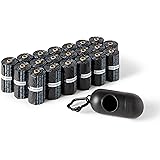Ensuring Paws and Whiskers Stay Safe – Essential Car Safety Tips for Traveling with Pets
Ever wondered how to make road trips with your furry companions not just enjoyable but also safe?
The open road beckons, but when you have a pet riding shotgun, there are crucial safety considerations to keep in mind. Have you ever questioned whether you’re doing everything possible to ensure your pet’s well-being during car journeys?
Join us as we navigate through essential car safety tips, ensuring that your travels with your beloved pets are not only memorable but also worry-free.
Buckle Up:
Just as you wouldn’t hit the road without securing yourself with a seatbelt, the same rule applies to your pets. Use a pet seatbelt or a secured pet carrier to restrain your furry friend, preventing them from roaming freely in the car.
BarkBox - Monthly Dog Subscription Box
Get your puppy the best toys and treats delivered monthly! BarkBox offers premium dog toys, treats, and chews that are perfect for growing puppies. Each box is curated by experts and includes 2 toys, 2 bags of treats, and a chew.
Amazon Puppy Essentials
Everything you need for your new puppy in one place. From crates and beds to food bowls and training pads, Amazon has all the essentials at great prices with fast shipping.
Secure Carriers and Crates:
For smaller pets, using a well-ventilated and secure carrier is the safest option. Larger dogs may benefit from a sturdy crate that is securely fastened in the car. Make sure the carrier or crate is appropriately sized and comfortable for your pet.
Backseat Bliss:
While it might be tempting to let your pet ride shotgun, the backseat is the safest place for them. Airbags can pose a threat to smaller pets, and the backseat provides a more secure environment in case of sudden stops or accidents.
Introduction to the Car:
Before embarking on a long journey, acclimate your pet to the car. Start with short rides and gradually increase the duration. This helps reduce anxiety and motion sickness, making the overall travel experience more enjoyable for your pet.
Frequent Breaks for All:
Just as you need breaks to stretch your legs and use the restroom, your pet does too. Plan for regular stops to allow your pet to relieve themselves, stretch, and stay hydrated. Keep a travel-friendly water bowl and some familiar items to make pit stops comfortable.
Never Leave Pets Unattended:
Leaving pets alone in a parked car, even for a short time, can be dangerous. Cars can quickly heat up, leading to heatstroke, dehydration, or stress. Always bring your pet with you when you leave the vehicle.
ID Tags and Microchips:
Ensure your pet has proper identification. Attach a sturdy ID tag to their collar with your contact information, and consider having them microchipped. In case of an unexpected escape or separation, this ensures a higher likelihood of being reunited.
Comfortable Travel Gear:
Make the journey comfortable for your pet by bringing their favorite blanket, toys, or a piece of your clothing with your scent. Familiar items can provide comfort and reduce stress during travel.
Preventing Motion Sickness:
Some pets may experience motion sickness. Consult with your veterinarian about options for preventing or alleviating motion sickness, whether through medication, specific feeding schedules, or other strategies.
Training for Car Rides:
If your pet is not accustomed to car rides, consider positive reinforcement training. Reward them for calm behavior in the car and associate car rides with positive experiences. This helps create a positive association and reduces anxiety.
Temperature Considerations:
Be mindful of the temperature inside the car. In hot weather, never leave your pet alone in a parked car as temperatures can skyrocket, leading to heat-related illnesses. In cold weather, ensure your pet stays warm with blankets or appropriate clothing.
Pet-Friendly Accommodations:
When planning an overnight stay, choose pet-friendly accommodations. Many hotels and motels welcome pets, but it’s essential to confirm their policies in advance. Bring your pet’s bed or blanket to create a familiar sleeping environment.
Emergency Pet Kit:
Pack an emergency kit for your pet, including their regular food, medications, first aid supplies, and a copy of their medical records. Familiar items can provide comfort, and being prepared ensures you can address any unforeseen health concerns.
Secure Loose Items:
Ensure that loose items in the car are safely secured. Sudden stops or turns can turn unsecured items into projectiles, posing a risk to both you and your pet. Stow away loose objects to create a safer travel environment.
Vehicle Ventilation:
Provide proper ventilation in the car. Crack a window to allow fresh air to circulate, ensuring your pet has access to sufficient oxygen. Be cautious of open windows, especially for dogs, to prevent them from jumping out.
Training for Car Exits:
Train your pet to exit the car calmly and on command. This skill can be crucial in various situations, preventing sudden escapes and ensuring your pet’s safety in busy or unfamiliar environments.
Familiarizing with Restraints:
Before the journey, familiarize your pet with their restraint system. Allow them to get used to the sensation of wearing a harness or being confined in a carrier. Positive reinforcement, treats, and gradual introductions can help them adjust.
Know Your Pet’s Limits:
Be aware of your pet’s tolerance for travel. Some pets may love long car rides, while others may find them stressful. Pay attention to their behavior and adjust travel plans accordingly to accommodate their comfort levels.
Monitoring Behavior:
During the journey, monitor your pet’s behavior for signs of distress, anxiety, or motion sickness. Frequent stops, reassurance, and maintaining a calm demeanor can help alleviate stress for your pet.
Plan Pet-Friendly Activities:
Incorporate pet-friendly activities into your travel itinerary. Look for parks, trails, or outdoor spaces where your pet can stretch their legs and enjoy some playtime. Providing opportunities for exercise and mental stimulation contributes to a positive travel experience.
Traveling with pets can be a rewarding adventure when safety is prioritized. By implementing these essential car safety tips, you not only ensure the well-being of your furry co-pilot but also create a foundation for stress-free and enjoyable journeys together.
So, buckle up, secure those carriers, and hit the road with the confidence that you and your pet are prepared for the adventures that await.
Auto Amazon Links: No products found.










